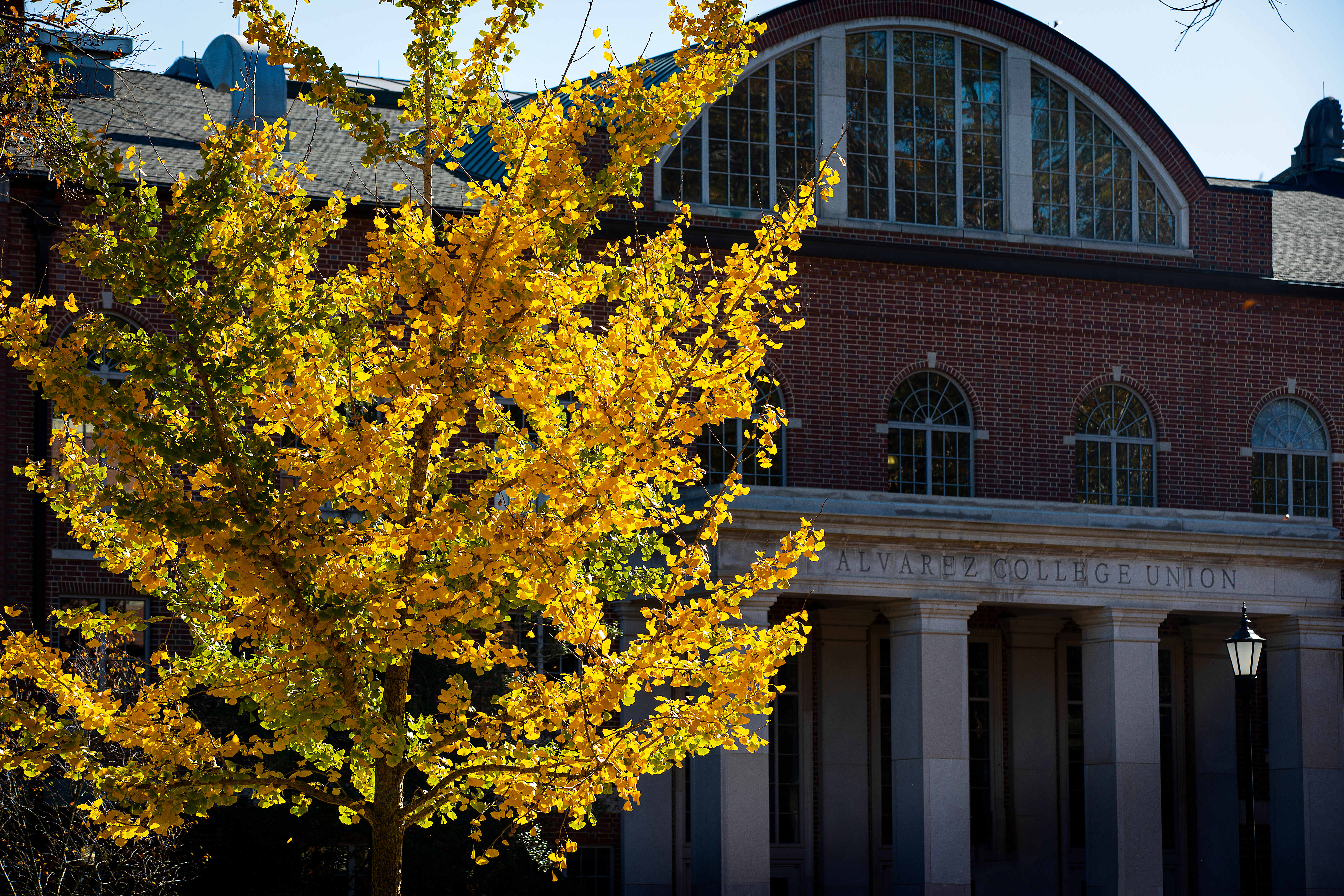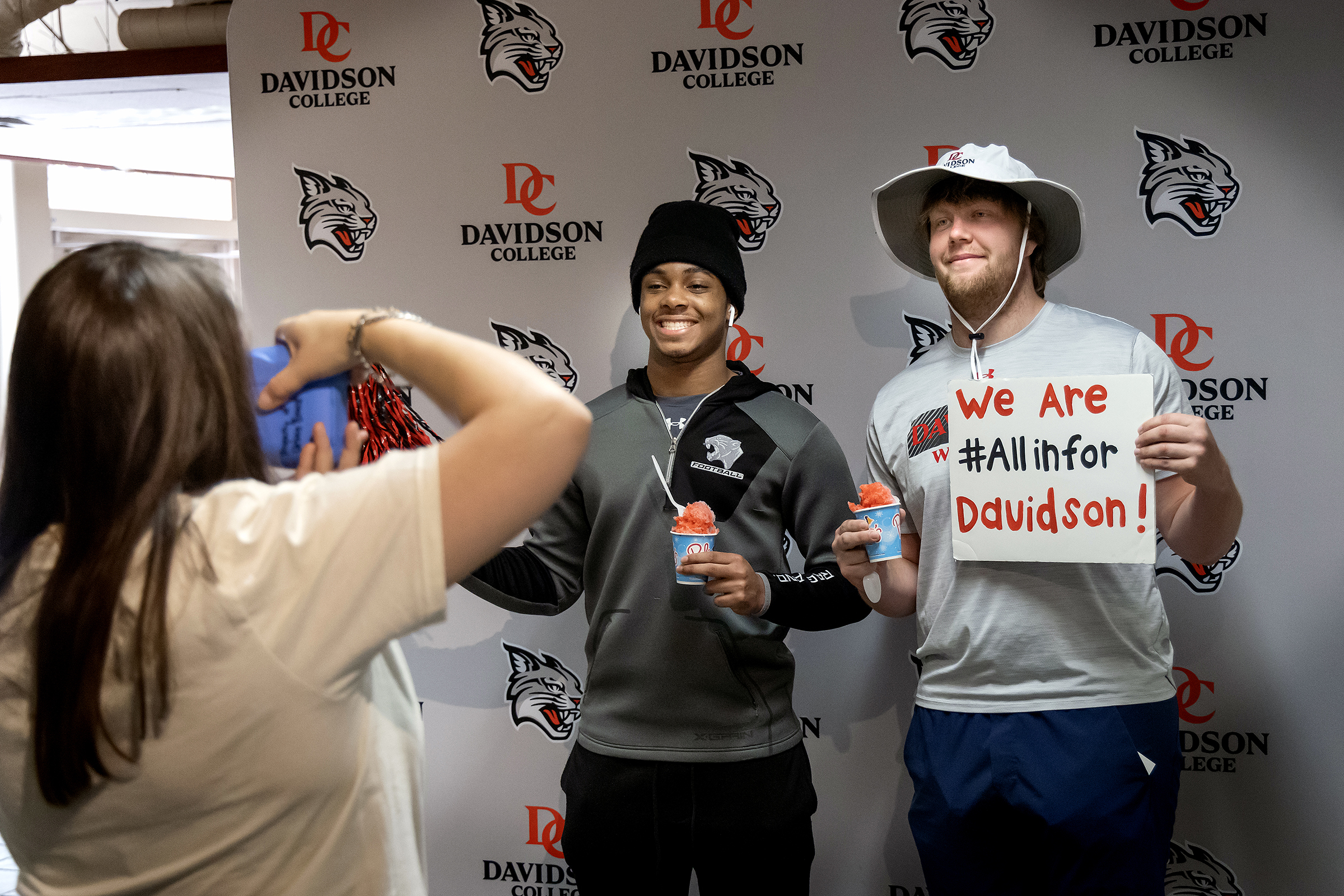Making a Library Indispensable in the Smartphone Era
October 22, 2018
Pumpkin spice latte alone cannot save a library.
Davidson College has joined the legions of schools, towns and cities trying to figure out the role of a library in an electronic culture. Libraries, still serving both Hollywood cliché silence and stacks of ink-on-paper information, have never before faced such a questioning of purpose.
The greatest upheaval in their history was the addition of coffee shops where magazine racks once stood. Espresso stead "Esquire."
Now they must contend with the endless possibilities of the internet: Siri v. the librarian. The foundation, not just sustaining libraries, but charting their future, is that data and information still have to be transformed into new knowledge.
It may sound quaint, but what's old is new again.
Ask Lisa Forrest, Davidson's new Leland M. Park Director of the library, who was immediately handed the assignment of charting the library's mission in the smartphone era. She sees a balance of real-time bricks and mortar (and the books she loves) with the moving targets of tech, teaching and learning. It's all together now, with a faculty whose youngest members were born in the pre-internet 1980s and a student body whose youngest members were born in 2000, the year the dot com bubble burst.
"Nobody says anymore, ‘I'm using my information literacy skills over here, and now I'm going over here to use my digital literacy skills,'" Forrest said. "Libraries are places to connect with people and find the expertise you need to parse the sea of information. Digital spaces can provide a version of this, but we still need physical spaces to interact -- to connect, collaborate, share, and learn."
Libraries still have shelves of books -- think of them as heavy, manually operated ipads -- and even a little of that musty smell if you go to the right -- or wrong -- spot. But libraries now show off captivating architecture, include comfortable and connected spaces that serve as a public square for ideas, serve coffee and snacks in their cafes and use robots to fetch books.
"Libraries fundamentally are the same organizations we've always been," said Lauren Pressley, president of the Association of College and Research Libraries. "It's about access to information, helping people find it and helping them use it, whether it's for writing a research paper or creating new knowledge."
But what's new and still changing is the way college libraries do what they do: creating new knowledge. They are partner, collaborator, moderator, instigator, a filter on the internet funnel and a conversational mosh pit for intellectual serendipity.
Some of the new solutions at the E.H. Little Library are simple, like partnering with Technology & Information to place a satellite Help Desk station at the front desk. Others are complex, like cranking up a campus-wide discussion on how best to archive, showcase and access the increasingly sophisticated digital materials created at Davidson.
Collaborating with Technology & Innovation is a natural for today's college and university libraries, and Forrest "gets" the unique needs and perspectives of a small, residential, academically diverse liberal arts campus.
"The library needs to be a neutral space," Forrest said, "that can support cross-disciplinary research and teaching."
At Hamilton College, Forrest led a blended team of librarians and educational technologists in the Division of Library & Information Technology Services. Originally from Cottonwood, Minn., population 901, Forrest cut her teeth early on information management as a counterintelligence assistant in the U.S. Army, where she started her own college career in night school. She was working as an occupational therapist in Buffalo, New York, when her love of poetry, people and programming led her into library sciences at SUNY Buffalo, then to Hamilton and now Davidson.
One of the first lunch dates Forrest made in her new job was with her directorship's namesake, Library Director Emeritus Leland M. Park '63, who knows the history of the library, the college and its culture like no other. She has since met with campus gallery directors and tech "makerspace" mavens, data analysts and entrepreneurs, fiction writers and research scientists, historians and social media experts.
Forrest has assembled an ambitious to-do list, including:
- Teaching partnerships and outreach, with librarians and archivists helping with first-year orientation, the Humanities program, the Hackathon at The Hurt Hub at Davidson, this fall's Yinka Shonibare "The American Library" exhibit, and pop-up workshops on topics from tech to literature;
- Special Collections & Archives exploring the history of student activism on and around campus, pushing to digitize archival resources related to research and teaching in justice, equality, and community, as part of a $1.2 million grant from the Andrew W. Mellon Foundation;
- And a new online catalog system.
Furniture needs upgrading as much as the technology, but Forrest emphasizes that, past and present, a good library is about relationships, a focal point in the unique community of scholars that gather on a residential liberal arts campus, she said: "That hasn't changed."



